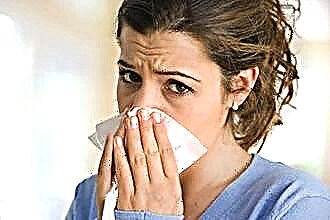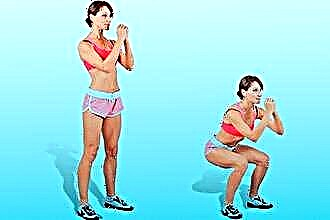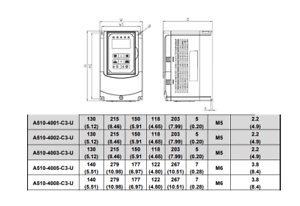A heart attack is an acute insufficiency of blood flow in the muscular layer of the heart, the development of which is associated with thrombotic damage to the vessels of the coronary segment with subsequent myocardial necrosis in the area supplied by the affected artery.
According to world statistics, this situation has a leading position in the list of factors provoking deaths among the population.
The consequences are irreversible, so it is extremely important to quickly recognize the problem, provide timely assistance and organize adequate prevention of repeated incidents.
What to do in case of a heart attack?
Activities should be started from the moment the first signs of a heart attack appear:
- intense burning chest pain;
- irradiation of pain in the left arm, teeth, neck, under the scapula;
- severe general malaise, progressive shortness of breath;
- fear of approaching death, psychomotor agitation;
- cold clammy sweat;
- nausea, indigestion, vertigo.
Pre-medical tactics and first aid: time before the arrival of the ambulance
In such a situation, first aid begins with calling an ambulance. In a conversation with the dispatcher, it is imperative to indicate the symptoms present in the patient, how long ago they began and to voice the suspicion of the development of a heart attack.
After that, it is worth starting a set of measures that are quite possible to carry out before the arrival of the ambulance team.
Help with a heart attack at home:
- Give the patient the most comfortable position (half-sitting with a bolster under the neck), which reduces the preload on the heart.
- Increase the flow of cool air, create the most comfortable temperature, loosen the belt, remove squeezing clothing.
- Calm down the patient, provide a comfortable psychological environment, do not create panic.
- Give one therapeutic dose of "Nitroglycerin" sublingually (tablets or spray), if necessary, repeat the dose after 5 minutes, but no more than three times in a row.
- Take 1-2 tablets of "Aspirin" for blood thinning.
- If possible, measure the pulse and blood pressure, find the medications that the patient is taking, previous ECGs, medical records.
- Do not leave a person unattended.
If the patient begins to choke and faints, you need to put him horizontally with a roller under his shoulders, remove the dentures from his mouth, if any. When vomiting, the patient must be turned on its side.
In case of cardiac arrest, before the arrival of the medical team, artificial respiration and chest compressions must be performed with a frequency of pressing 100 times per minute (the ratio of chest compressions to breaths is 30: 2).
Emergency care for a heart attack upon arrival of a specialized medical team:
- If the patient is in a satisfactory condition, collect anamnesis, conduct an examination and physical examination, assess the patient's condition using the ABCDE system.
- Register 12-lead ECG, determine pulse oximetry (start oxygen therapy at saturation below 95%), provide venous access.
- Adequate analgesia - "Morphine hydrochloride" 2-5 mg every 10 minutes until the pain syndrome is eliminated.
- Intravenous drip of "Nitroglycerin" at a dose of 10-20 mcg / min. under the control of blood pressure and heart rate.
- Combined use of "ASK" and "Clopidogrel".
- Beta-blockers in the absence of contraindications (Metoprolol, Anaprilin, Esmolol).
- Transportation to the intensive care or heart attack cardiology department.
Algorithm of medical tactics
Intensive therapy is carried out taking into account the treatment at the prehospital stage:
- Drip injection of "Nitroglycerin" at a dose of 100 μg / ml.
- "Morphine hydrochloride" for pain relief, tranquilizers ("Seduxen", "Diazepam") in case of psychomotor agitation.
- Anticoagulants - "Enoxaparin" at a dose of 0.5 mg / kg IV bolus, then "Clexan" subcutaneously.
- Beta-blockers - sublingual "Anaprilin" or "Metoprolol" (infusion of these drugs is carried out in case of severe tachycardia and increased blood pressure).
- Statins - "Atorvastatin" 40 mg or "Rosuvastatin" 20 mg.
- ACE inhibitors, angiotensin-2 receptor blockers - Valsartan 40-80 mg, Ramipril 5-10 mg.
- Aldosterone antagonists - "Spironolactone" 25 mg or "Eplerenone" 25 mg.
All patients are promptly shown to perform emergency coronary reperfusion by thrombolysis, percutaneous coronary intervention (balloon angioplasty, coronary artery stenting) or coronary artery bypass grafting.
Heart attack in a woman: features of care
Before the onset of menopause, women are practically not susceptible to cardiovascular disasters (hormonal background with the prevalence of estrogen protects the vessels from the formation of atherosclerotic plaques). After 50 years, a sharp decrease in the concentration of steroid hormones increases the risk of developing myocardial infarction.
For this category of patients, precursors of the development of a heart attack are characteristic, which can disturb for 1-2 months:
- sleep disturbances, snoring, sleep apnea;
- causeless fatigue, a sharp decline in strength, headaches, anxiety;
- progression of periodontal disease;
- shortness of breath, annoying dry cough, swelling of the lower extremities;
- frequent nighttime urge to urinate;
- manifestation of various paroxysmal cardiac arrhythmias.
Instead of the traditional clinical picture, women often develop atypical heart attacks. Symptoms can simulate exacerbation of gastrointestinal tract pathology (gastritis, ulcers, pancreatitis, cholecystitis), obstructive pulmonary diseases (bronchial asthma), cerebrovascular accident. The high pain threshold and atypical onset complicate timely diagnosis and treatment.
The difference between a heart attack is the lack of correlation between the extent of myocardial ischemia and the severity of pain syndrome, the addition of various arrhythmias, and the gradual progression of the condition.
The treatment algorithm is identical to that of men, but the doctor should take into account the greater risk of sudden death and fatal complications in the acute period.
Conclusions
Women have a lower prognosis after a heart attack than men. With age, the level of estrogen in the blood drops in the weaker sex, background pathology often joins (hypertension, diabetes mellitus, obesity). Untimely seeking help and attempts to self-medicate significantly reduce the effectiveness of therapy and worsen the patient's quality of life, increasing the degree of disability. Elderly women should be especially attentive to their health, undergo regular medical examinations, and lead an active lifestyle. If two or more precursors of a heart attack appear, see a doctor immediately. Timely diagnosed early signs of a heart attack in women and first aid provided in full can save lives.



